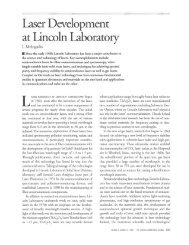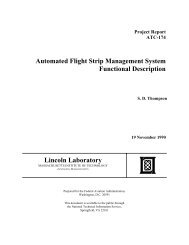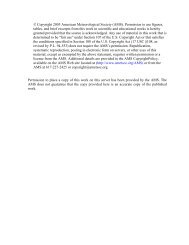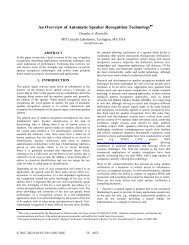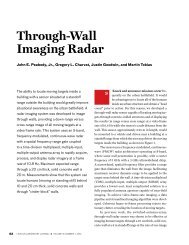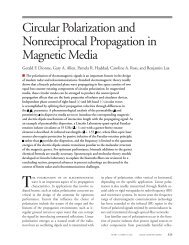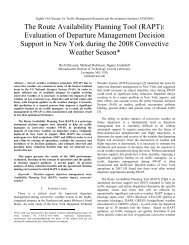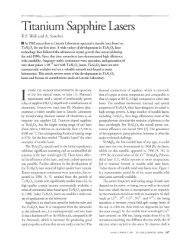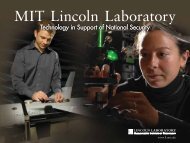2011 Annual Report - MIT Lincoln Laboratory
2011 Annual Report - MIT Lincoln Laboratory
2011 Annual Report - MIT Lincoln Laboratory
You also want an ePaper? Increase the reach of your titles
YUMPU automatically turns print PDFs into web optimized ePapers that Google loves.
LEADERSHIP<br />
■ Advanced architectures and technologies<br />
were transitioned to the next<br />
generation of counter–improvised<br />
explosive device electronic attack<br />
systems.<br />
■ Support continued for two novel<br />
airborne sensor systems that are<br />
elements of a fielded, quick-reaction,<br />
multiple-intelligence capability for<br />
intelligence, surveillance, and reconnaissance<br />
(ISR).<br />
■ The <strong>Laboratory</strong> innovated a groundpenetrating<br />
radar technology for<br />
counterterrorism applications. Significant<br />
antenna array and processing<br />
advances were demon strated, and a<br />
field-worthy prototype is in development.<br />
Dr. Robert T-I. Shin Dr. Robert G. Atkins Dr. Justin J. Brooke Dr. Kevin P. Cohen Dr. Melissa G. Choi<br />
FUTURE OUTLOOK<br />
LEFT: The <strong>Laboratory</strong> is leveraging fundamental<br />
strengths in systems analysis, radar design, antenna<br />
array development, and tactical data processing to<br />
develop a novel approach to ground-penetrating radar<br />
(GPR) technology.<br />
ABOVE: The GPR trace image was created by the<br />
system at left.<br />
■ A current, renewed emphasis on threat prototyping will continue and will be leveraged to<br />
better inform Department of Defense acquisition decisions.<br />
■ Support to the U.S. Air Force will expand in the key area of information dominance.<br />
Efforts will inform the development of new capabilities for evolving threats, and the<br />
refresh of current ISR capabilities.<br />
■ A new Advanced Concepts and Technologies Team initiated for the Air Force will grow<br />
to provide increased advanced concept innovation in novel sensors and systems for<br />
enhanced air vehicle survivability.<br />
■ To address current needs and changing acquisition paradigms, the <strong>Laboratory</strong> will<br />
continue to extend its rapid development capabilities.<br />
■ Counterterrorism efforts will increase, with greater emphasis on the development and<br />
demonstration of ISR architectures.<br />
<strong>MIT</strong> <strong>Lincoln</strong> <strong>Laboratory</strong> 37



